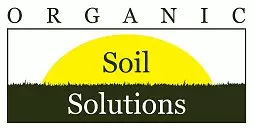THE WORLD BENEATH OUR FEET
Home / THE WORLD BENEATH OUR FEET
Under our feet exists a community of microscopic organisms busy living their lives in a world little understood by those who walk above them. This incredibly diverse community is called the soil food web. There are hundreds of thousands of species and up to a billion individual organisms in a teaspoon of soil. All this biology is an integral part of a healthy ecosystem. These soil dwellers are performing important tasks that allow plants and the species that depend on them to thrive and grow. As they eat, grow, and move through the soil, these organisms make it possible to have clean water, clean air, healthy plants, and moderate water flow. At Organic Soil Solutions, we want to nourish and protect the soil food web. An active soil food web makes our job a lot easier and your lawn a lot healthier. The organisms of the soil food web range from one-celled bacteria, algae, fungi, and protozoa to the more complex micro-arthropods. It also includes earthworms, small vertebrates, insects, and plants.
The soil food web is a busy place.
The organisms eat and store nutrients. They eat and are eaten by others. They fix nitrogen from the air and make it available to plants. Plants release food into the soil to attract beneficial bacteria and fungi that coat their roots and prevent disease. Soil biology decomposes toxins, manure and organic matter. The soil food web aerates, de-thatches and improves water retention, which helps improve soil structure.
Synthetic, water soluble chemicals are bad for soil biology.
Every chemical based pesticide, fungicide, herbicide, and fertilizer tested harms or kills some of the beneficial life that exists in the soil. Many of today’s soils have severely depleted soil biology populations.
Each ecosystem has a different soil food web.
Forest and perennial beds tend to have more fungi than bacteria. The ratio of fungal to bacterial biomass may be 5 or 10 to 1 in a deciduous forest and 100 or 1,000 to 1 in a coniferous one. A meadow or vegetable garden is slightly bacterial. A lawn should have about a 1 to 1 ratio of fungal to bacterial biomass.
Different species are active at different times and places.
The area directly around the roots is the most active place. It is teeming with bacteria that feed on old plant cells and the proteins and sugars released by roots to attract them. The protozoa and nematodes that feed on the bacteria also hang around the roots, providing much of the nutrient cycling and disease suppression the plant is looking for. The most active time for the soil food web in our area is in the late spring, when temperature and moisture levels get things cooking. Some species, however, are active in the winter, especially in the water melting underneath the snow. Other species are active when it is dry.
A complex soil food web has a lot going on.
Many different organisms are active at different times and places, interacting with each other, with plants and with the soil. The results are nutrient storage and cycling, better air and water circulation and disease suppression. A more complex soil food web has more of these benefits. Activities such as digging up and turning over the soil, irrigation, and pesticide use change the complexity and structure of the soil food web.
Compost tea is the most promising and exciting technology in the organic industry.
It is used extensively in organic agriculture and more and more in non-organic golf courses and farms. Some golf course superintendents, who are not particularly interested in organics or protecting the environment, do believe in reducing their huge pesticide budgets. They find much less fungal disease, a considerable problem on golf courses, with the use of compost tea.
Compost tea replenishes the soil food web.
We take great pride in our brews. Organisms are extracted from high quality, tested compost in a 24 hour brewing process. Nutrients in the water allow the biology to increase in number and activity. We are constantly experimenting with different nutrient mixes and composts to improve our product and get the greatest diversity possible. An enormous variety of bacteria, fungi, protozoa and nematodes are present and ready to go to work. Compost tea has to be used within six hours to be most effective. If it loses oxygen and becomes anaerobic it can become very smelly, very quickly. Our compost tea is regularly tested to assure the proper mix of bacteria and fungi for lawn applications.
Feed the soil and let the soil feed the plant.
At Organic Soil Solutions we use as much compost tea as possible. Our two brewers are going every day and we use the tea to compliment our granular applications. We see adding biology to the soil as an important part of an organic lawn care program. The granular products we use contain essential food for the biology.
